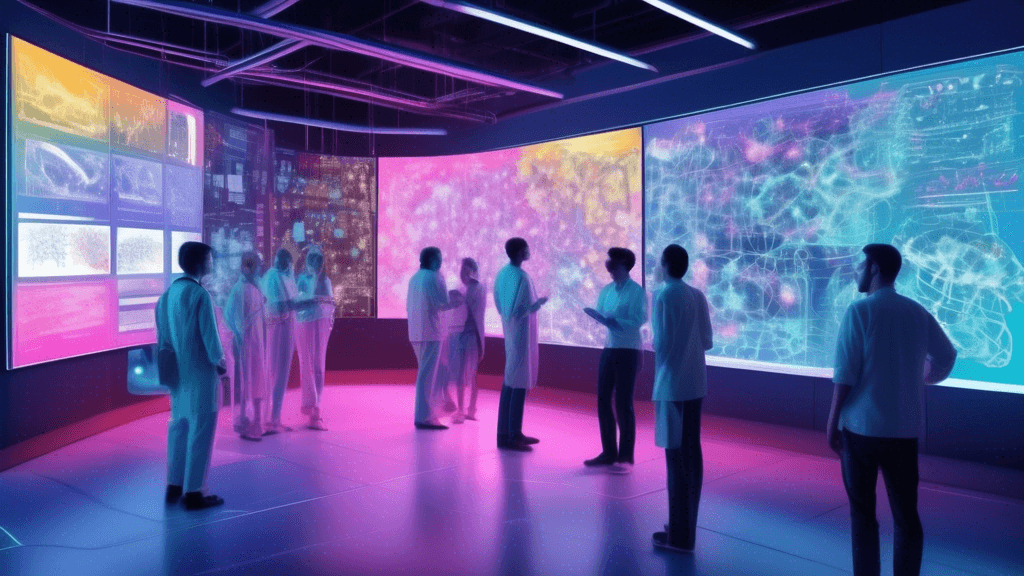Image Categorization using JAX & Flax: A Personal Journey
Hey there, fellow coder! Have you ever found yourself staring at a sea of random images, wondering how on Earth you might efficiently categorize them? I sure have. And let me tell you, the voyage from chaos to clarity can be quite the adventure, especially when embarking on it with JAX and Flax.
The Starting Point
Let me set the scene: Picture a typical weekend (because when else do we take on these exciting side projects?). I had just found a collection of assorted images on my hard drive. It felt like a challenge calling out to me — could I use machine learning to automatically categorize these? Of course, my mind immediately jumped to JAX and Flax. Who wouldn’t want to dive into these powerful tools?
Why JAX & Flax?
You might be wondering, why choose JAX and Flax over other deep learning frameworks like TensorFlow or PyTorch? Well, it turns out that JAX, with its ability to compile Numpy code to run on GPUs and TPUs, matched with Flax’s high-level neural network interface, provides the perfect playground for experimentation and performance optimization. Plus, who doesn’t love trying something a bit edgy and new?
The Setup
So there I was, setting up my environment. If you’ve ever navigated through setting up a deep learning project, you know it can be like piecing together a jigsaw puzzle. But with JAX & Flax, the process was reasonably straightforward. My humble advice? Make sure your Python is right up to date and let conda or pip be your trusty steed in managing dependencies. Simple, right?
Diving into Categorization
With everything in place, it was time to get my hands dirty. Starting with loading a dataset — I opted for the EuroSAT dataset because who doesn’t love satellite images? Let’s face it, the thrill of categorizing images of coffee plantations and residential areas is quite unmatched. Using JAX and Flax, I built a CNN model from scratch to classify these mesmerizing patterns. It was like solving a massive puzzle, except the reward was not just the last piece fitting in but watching my algorithm learn and improve.
Bumps Along the Road
Let’s pause here — what project doesn’t come with its highs and lows? My first few attempts at training were, let’s say, more misses than hits. But every stumble was a lesson. Debugging with JAX’s handy features, which allow efficient trial-and-error learning, saved the day (or weekend, in this case). Highlighting different lines of code, I’d tweak parameters here and there, akin to a DJ adjusting the pitch until the sound is just right. That’s where the magic of Canvas comes into play.
Enter Canvas: My Secret Sauce
Ah, Canvas. If you’ve ever wanted a creative, collaborative workspace, this is it. Imagine having a buddy right beside you, offering suggestions without being overbearing. As I refined my code, Canvas allowed for quick edits and revisions, making it easy to experiment with different neural network configurations. If you’re tired of jumping between interfaces or apps, Canvas is your playground.
Celebrating Success
An exhilarating moment arrived when my model’s accuracy began to climb — reaching a precious 85% — a triumph! I felt like celebrating more than just a personal milestone; it was also the power of these cutting-edge tools that made it possible. So, if you’re thinking about diving into image categorization, I wholeheartedly encourage you to try. Consider your own practices — what tools are you using, and could JAX and Flax offer a fresh perspective?
Wrapping Up
This adventure in image categorization wasn’t just about the technology. It was a reminder of the joys of learning, experimenting, and sometimes laughing at one’s bugs. So, fellow explorer, what’s stopping you? Boot up JAX and Flax, and let’s see what kind of image magic you can create!
And remember, technology is a journey, not a destination. Happy coding!
